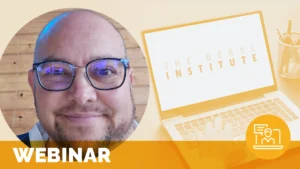Building a System-Wide Experience Model

Patrick Ratchford, Vice President, Patient Experience, Carolinas HealthCare System, discusses four components of the ONE Experience Model demonstrating Carolinas commitment to Patients First Always _ including, informing and inspiring every person, every encounter, every time. Creating a consistent experience across multiple sites takes a lot of work, but by regularly connecting to purpose and the standard work outlined in the ONE Experience Model, organizations can have a framework to put patients first always.
Related content
-
 Culture & Leadership | Infrastructure & Governance
Culture & Leadership | Infrastructure & GovernanceDeveloping Multidisciplinary Committees for Patient Experience Effectiveness
This webinar explores how to move beyond recognizing the value of patient experience to embedding patient- and family-centered care into organizational culture. Learn how Patient Experience Committees, including a successful Cleanliness Committee, have driven improvements in HCAHPS scores, engagement, and collaboration. Discover strategies for structuring a Patient Experience Steering Committee with multidisciplinary subcommittees aligned to
Learn more -
 Culture & Leadership
Culture & LeadershipContrasting Patients’ and Healthcare Professionals’ Experience in Hematological Cancer Care Pathway : A Narrative Study
Hematological cancers represent 10% of cancers diagnosed in Canada. Treatments involve complex care pathways and various modalities as well as the management and monitoring of multiple side effects. There is limited understanding of these pathways from the perspectives of the people living with cancer (PLC) and the healthcare professional (HCP). The aim of this article
Learn more -
 Culture & Leadership | Quality & Clinical Excellence
Culture & Leadership | Quality & Clinical ExcellenceEmpowering Healthcare: Understanding and Supporting Trans and Non-Binary Patients
Join Lou Weaver for a webinar on understanding trans and non-binary individuals and their healthcare needs. The session will cover specialized healthcare considerations, Standards of Care, and the impact of Social Determinants of Health on this population. Participants will explore the differences between sexual orientation (SO) and gender identity (GI), the importance of related data,
Learn more
